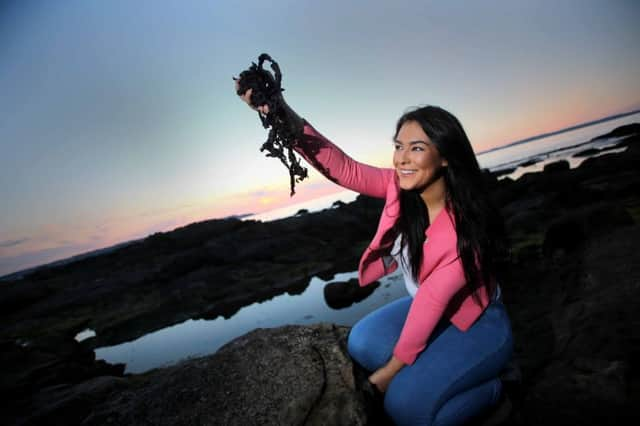'˜We need to cement our unique food traditions and recipes'


We’ve had a surge of artisan producers in the province in the last 10 years who are responsible for innovative food that’s put this part of the world on the culinary global map.
Butter producers like Will and Alison Abernethy in Dromara have taken an age old traditional craft to a new level. They’ve added dulse and smoke to make two different variations on the original.
Advertisement
Hide AdAdvertisement
Hide AdDulse, and other varieties of seaweed, is another ancient food that has seen a resurgence in popularity.
Not that long ago it was dismissed as a peasant food only enjoyed by a few hearty souls on the north coast, myself included. Now it appears on the trendiest of menus and in products like oatcakes and even champ. You either love it or hate it, but you can’t deny its heritage. It sustained us at times of famine, is part of our history and will always be part of the food culture here. For me a trip to the seaside wouldn’t be complete without picking up a small paper bag of this purple hued sea vegetable.
Slow Food is a global movement that celebrates good, clean and fair food. It started in Italy in the 1980s as a reaction to a McDonalds opening on the Spanish steps in Rome. It’s essentially a group that cherishes the way we used to produce food, with good husbandry, little pesticides and a respect for cooking heritage. Slow Food have an Ark of Taste, which archives traditional foods and recipes and protects products globally from extinction.
At the moment there are only two foods from NI represented on this collection - dulse and corned beef. There are more in the pipeline and if Eccles cakes can be on the list, then why not our amazing soda farls?
Advertisement
Hide AdAdvertisement
Hide AdKay Armstrong who runs delimuru preserves and I are collating a collection of old recipes for Slow Food NI. If you have a recipe that’s been passed down through generations and you’d be willing to share it, we would love to record it for future generations.
This is the first time in the history of the world, since the discovery of fire, that most people don’t know how to cook. We need to cement our unique food traditions and recipes and keep our indigenous food culture alive.
Claire Kelly, who runs the award winning Passion Preserved artisan chutney range, reminded me of an old recipe last week that she told me about at Balmoral show last year. It’s for a buttermilk plant. I remember my granny, who was a prolific baker of wheaten bread, having one of these. You make a starter of yeast, sugar and milk, let it ferment and then add milk to make buttermilk. The more you use it the more you have and it’s a great product to give away and to share the love. Claire kindly gave me the recipe and it’s bubbling as we speak in a quiet corner of my house. Slow Food with an Ulster accent.
The other recipe this week comes from Kay and is for a tealoaf that she got from one of her late neighbours. She’s brought it up to date by using artisan Heritage Tea from Belfast and Waggle dance honey, but substitute any that you prefer.
Advertisement
Hide AdAdvertisement
Hide AdIf you’ve got a recipe you’d be willing to share either email Kay at [email protected] or me via my website paulamcintyre.co.uk.
There’ll be a copy of my new book and a couple of jars of deli muru preserves for the best one!